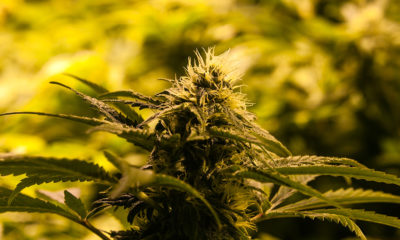
Medical
7 Diseases That Can Be Treated with Medical Marijuana
A partial list of cannabis’s medicinal uses.
Over the past four decades, treating diseases with medical marijuana has been on the rise. The credibility of cannabis has grown in the medical community as a possible solution to treat chronic conditions and diseases. While marijuana hasn’t demonstrated that it is the ultimate solution or cure to end a disease in general, it can help soothe the effects of chronic diseases, inhibit diseases from developing at a rapid pace and possibly become a replacement for opioids to handle emotional and physical pain.
This is how marijuana positively contributes to the following seven diseases:
1. Depression
A study from the University of Buffalo’s Research Institute on Addictions tested how marijuana affected chronic stress in rats and used this information to coincide with equivalent human responses. In this experiment, researchers found that when the rats were bound by rodent restraints for long periods of time — a source of chronic stress — the production of their brain’s endocannabinoids rapidly decreased. In regards to human beings in long-term stressful situations, these receptors influence how well a person can process thoughts, gauge emotions and behave, and they even can impact a person’s cognitive ability to handle pain and anxiety. When there is a lack of endocannabinoid production in the brain, an individual is at risk of developing depression. Marijuana can play a role in restoring cannabinoids such as tetrahydrocannabinol and cannabidiol in the endocannabinoid system, and helping ease the depressing.
2. Anxiety
Like depression, anxiety reduces the endocannabinoid production in the brain and inhibits an individual’s ability to cope with pain and stress. However, the use of marijuana to treat anxiety can go either way: It can either deplete anxiety or increase it. While marijuana is meant to bring a person into a tranquil state, some individuals possess a brain chemistry that simply does not react well with the plant’s chemicals. In other cases, marijuana has been able to prevent unwanted anxiety attacks, stimulate a calmer “fight-or-flight response” to stress and all-together provide the user with a “high” that releases any tension in the body.
3. Epilepsy
Given that epilepsy is a cause of seizures (also known as “electrical storms”), medical scientists have created a specific CBD formula that is proven safe for individuals to use because it possessed little to no effect on the sensitive psychoactivity of epilepsy patients. Some of the first tests with marijuana, such as a 2015 test at the NYU Langone Medical Center, actually demonstrated that it had the ability to suppress seizures. Because of this, researchers and developers have been able to manipulate marijuana compounds to tailor to an individual’s epileptic condition, keeping in mind that this disease affects multiple people differently.
4. Alzheimer’s
Marijuana diminishes the intensity of hallucinations, improves poor sleeping habits and stops aggressive outbursts suffered by individuals with Alzheimer’s. The main source of Alzheimer’s is its rapid production of beta-amyloid proteins, which cause plaques to develop in the brain and dangerously reduce the necessary peptides in amino acids that enable one to properly function. Most importantly, marijuana can slow this build-up of proteins to prevent existing Alzheimer’s from deteriorating an individual’s brain.
5. HIV/AIDS
The HIV virus weakens the immune system, but marijuana softens the impact of disorienting and uncomfortable symptoms of a weak immune system, such as nausea, muscle and joint pain, loss of appetite, severe headaches and fevers. Furthermore, in this particular study from Spain in 2008, marijuana was proven to prevent chemical reactions in the body that create HIV compounds.
6. Cancer
While marijuana does not fundamentally cure cancer or diminish its symptoms, it is able to reduce the discomfort in certain treatments that many cancer patients undergo. Cancer patients who use medical marijuana endure a lessened amount of inevitable nausea and vomiting caused by their chemotherapy treatments. Furthermore, cannabinoids improve appetite and can ease the neuropathic pain that is a result of severe nerve damage caused by chemotherapy.
7. Drug Addiction
Though it seems counter-intuitive, recovering addicts can use medical marijuana to reverse the effects of opioid addiction, decrease unwanted drug cravings and even diminish the emotional and physical symptoms of addiction. This is due to the chemical compounds of cannabidiol, which binds to brain receptors that induce a safer “high” and counteract impairments and mental damage caused by long-term drug abuse. Lastly, marijuana can even replace addictive painkillers since it targets the same nerve receptors as opioids without putting the user at risk for chronic addiction.
TELL US, what diseases do you treat with cannabis?


























